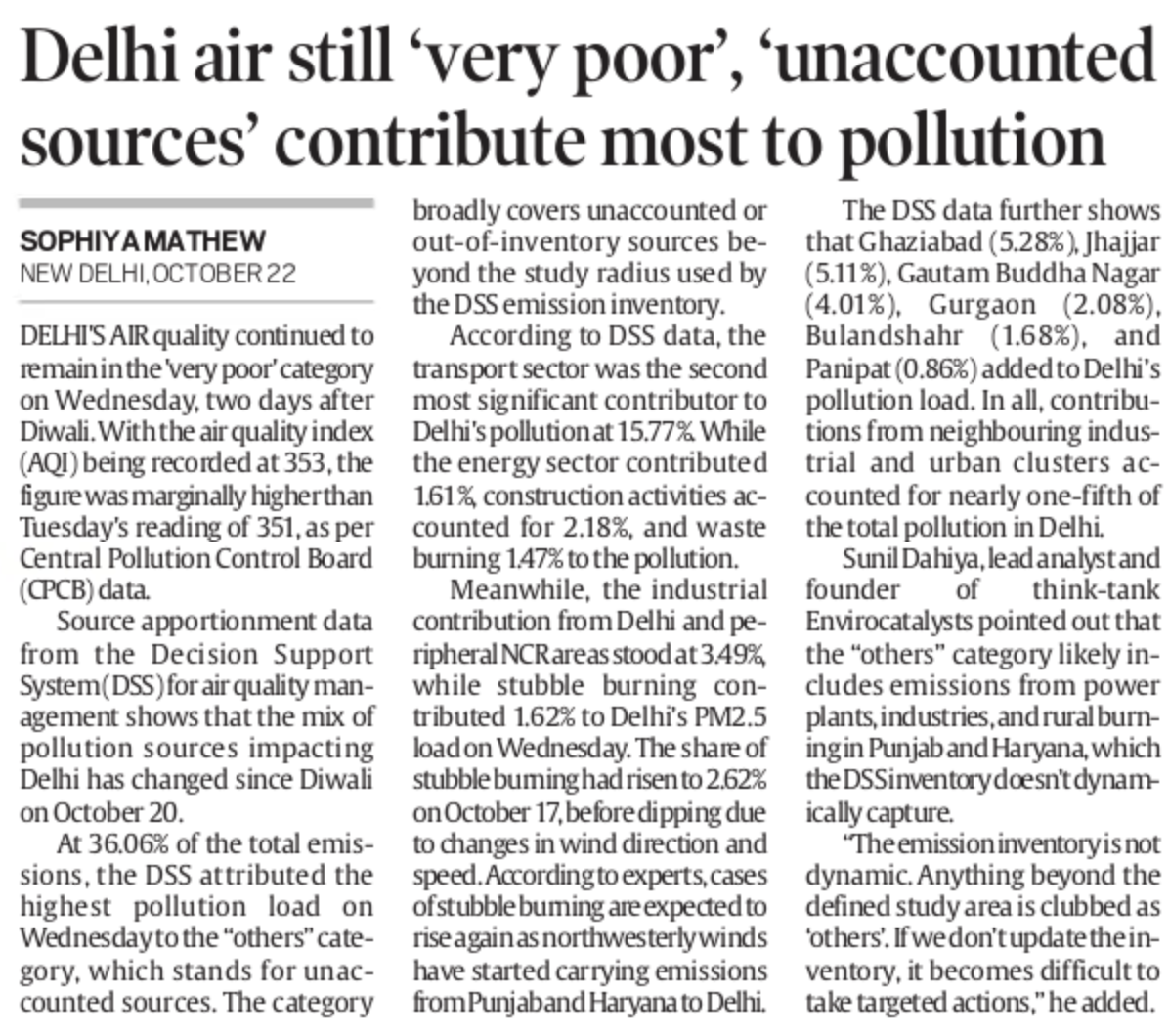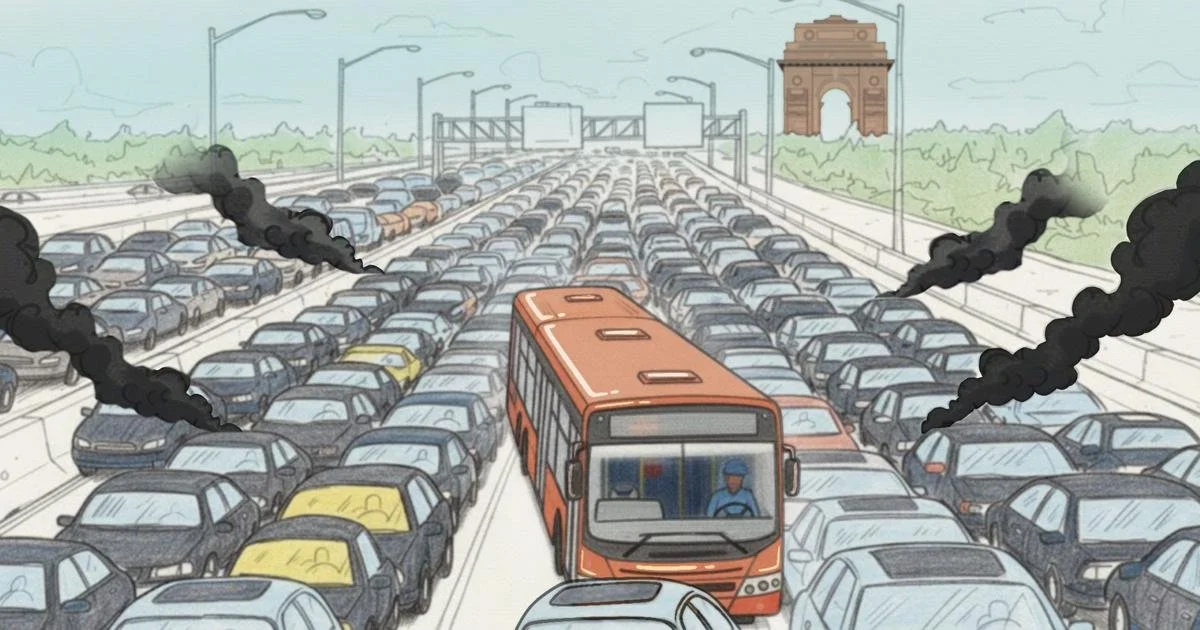Envirocatalysts Blog
Tags
- AAP
- AQI Monitoring Stations
- Air Monitoring Stations
- Air Pollution
- Air Purifiers
- Air Quality Index
- Air Quality Monitoring Stations
- Anand Vihar
- Artificial Rain
- BJP
- Byrnihat
- CAQM
- CPCB
- Chennai
- Cloud Seeding
- Construction
- Delhi
- Delhi AQI
- Delhi Air Pollution
- Delhi Air Pollution Monitoring Stations
- Delhi Air Quality
- Delhi Government
- Delhi Pollution Monitoring Stations
- Delhi-NCR Air Pollution
- Diwali 2025
- Electric Vehicles
- Energy
- Farms Fire
- GRAP
- Green Crackers
- Gurgaon
- Gurgaon AQI
- Gurgaon Air Pollution
- Gurugram
- Gurugram AQI
- Haryana
- Health
- Heatwave
- IIT Kanpur
- India
- Indonesian
- Industrial Pollution
- Mumbai
- NO2
- Noida AQI
- Noida Air Pollution
- Noida Air Quality
- PM2.5
- Punjab
- Rohtak
News Outlet
- ABP
- ANI
- Amar Ujala
- Asianet News
- Awaz The Voice
- Big News Network
- Bloomberg
- Bombay Samachar
- Bombay Samachar English
- CNBC TV18
- CNN
- Dainik Bhaskar
- Dainik Jagran
- Deccan Chronicle
- Desi Talk Chicago
- Down to Earth
- Financial Express
- Firstpost
- Gadzetomania
- Gulf News
- Harbhumi
- Hindi
- Hindustan Times
- India's News.Net
- Indian Express
- Kabar Sebelas
- Lagatar24
- Latestly
- Mahabahu
- Maharashtra Times
- Mathrubhumi
- Mid Day
- Millennium Post
- Moneycontrol
- More To Her Story
- NDTV
- NewKerala.Com
- News Mobile
- News Trail Qatar
- News18 Hindi
- News9
- NewsBytes
- NewsDrum
- Newslaundry
- Nikkei Asia
- Odisha Bytes
- Outlook Planet
- Press Trust Of India
- Question of Cities
- Scroll
Delhi: Share of stubble fires in city’s air pollution still low, for now
The contribution of stubble burning in neighbouring Punjab and Haryana has remained negligible this season – below 1% on most days, and peaking at just 2.6%
Delhi AQI today: City’s air stays ‘very poor’ three days after Diwali
Delhi AQI today: The analysis by the Decision Support System (DSS), which tracks pollution sources, showed that the mix of emissions affecting Delhi had shifted since Diwali on October 20.
The Question is... Can Delhi Ever Escape The Cycle of Toxic Air?
Delhi's air pollution is a year-round menace, not merely a winter phenomenon. The city is trapped in a perfect storm of its own traffic, industry, and construction dust, which is then catastrophically exacerbated each autumn by agricultural burning in neighbouring states. The fundamental question remains whether India's capital can ever truly escape its toxic air and reclaim a healthy environment.
What’s polluting Delhi’s air? City stays in ‘very poor’ zone for third straight day
Source apportionment data from the Decision Support System (DSS) for air quality management shows that the mix of pollution sources impacting Delhi has changed since Diwali on October 20.
Explained: 350 vs 1,100, CPCB vs IQAir, Who Has Got Delhi's AQI Right
Both CPCB and IQAir follow different methods of calculating air quality index, resulting in different numbers.
प्रदूषण से फूला दम, 38 में 36 एअरक्वालिटी केंद्र ‘रेड जोन’ में
During Diwali, Delhi’s pollution worsened significantly, with 36 out of 38 air quality monitoring centres falling into the ‘red zone’. Sunil Dahiya mentioned that the smoke from fireworks, combined with vehicle emissions and construction dust, made the air extremely unhealthy, affecting breathing for most residents.
Delhi air still ‘very poor’; ‘unaccounted sources’ contribute most to pollution
Delhi’s air quality stayed in the “very poor” range two days after Diwali, with an AQI of 353. Data from the Decision Support System showed that over 36% of the pollution came from “unaccounted sources”, meaning emissions not clearly identified or tracked. Transport, industry, and waste burning also added to the problem. Sunil Dahiya from Envirocatalysts explained that these unaccounted sources likely include power plants, industries, and crop burning in nearby states, which are not properly captured in pollution records.
Crackers unleashed, toxic haze cloaks Delhi
A reading of 351 qualifies as “very poor” – a category for which NCDC recommends “avoiding physical activity outdoors” and remaining indoors as far as possible
Diwali pollution data 'gap': 30 of 39 AQI monitors went offline for hours when Delhi needed them most
Stations at Jawaharlal Nehru Stadium, Nehru Nagar, Patparganj, and RK Puram each lost about eight hours of readings.
As pollution soared on Diwali night, Delhi’s air monitors fail at key moments
An analysis of CPCB and DPCC data by HT revealed that only nine stations – barely 23% of the city’s monitoring network – recorded continuous data
As pollution peaks across Delhi, many stns go blank
Several air quality monitoring stations in Delhi, including RK Puram, went offline for hours on Diwali night, leaving critical PM2.5 data missing during peak pollution hours. Experts said the data gaps skewed average readings and hindered analysis of pollution sources. Sunil Dahiya, founder of EnviroCatalysts, said missing data hampers understanding of pollution trends and called for improved data transparency and monitoring practices.
A Diwali Of Epic Proportions: Delhi Pollution This Year Was Highest Compared To Last Four Years
Several government-run open-access websites that publish real time monitoring of air quality were unavailable for several hours during peak firecracker time on Diwali day
Pollution up 8x, firecrackers account for 40% of it
Firecracker emissions contributed between 30% and 40% to Delhi’s pollution on Diwali, with PM2.5 levels spiking eightfold due to stagnant wind conditions. Experts said calm weather and poor dispersion worsened air quality overnight, pushing pollution levels 60–67 times above WHO’s safe limit. Data analysis by EnviroCatalysts revealed that PM2.5 levels on Diwali night have consistently surged 200–300% compared to pre-Diwali levels since 2021.
Only 9 Delhi AQI monitors functioned during peak Diwali pollution
The report has revealed that a significant failure occurred as 30 of Delhi's 39 official air quality monitors were offline during the Diwali period, hiding the true scale of the pollution crisis from the public.
Delhi pollution data from many stations goes missing for 5 hours on Diwali night
Delhi's air monitoring stations missed key pollution data during Diwali's toxic air spike.
Sharp PM2.5 surge after 10pm on Diwali, Sec 51 tops
On Diwali night, Gurgaon’s PM2.5 levels soared to 16 times the national limit as residents continued bursting crackers well past the Supreme Court’s permitted 8–10 pm window. The hourly concentration of PM2.5—a fine particulate pollutant linked to respiratory problems—rose sharply, with Sector 51 recording the highest at 949 micrograms per cubic metre around midnight. Despite restrictions, fireworks continued sporadically till 2 am in several neighbourhoods, including DLF phases, Sector 56, Palam Vihar, and Golf Course Extension. Residents complained that noise and smoke lingered for hours, reducing visibility. Officials said the city’s air quality remained in the ‘severe’ category for several days after Diwali.
What the Severe AQI of Delhi NCR This Week Tells Us About India’s Democracy
If rationality and data take a backseat, the courts hesitate to take reasonable decisions, and a government which must prioritise public health does the opposite, then democracy – which is about accountability to the people and the well-being of all – also suffers.




















